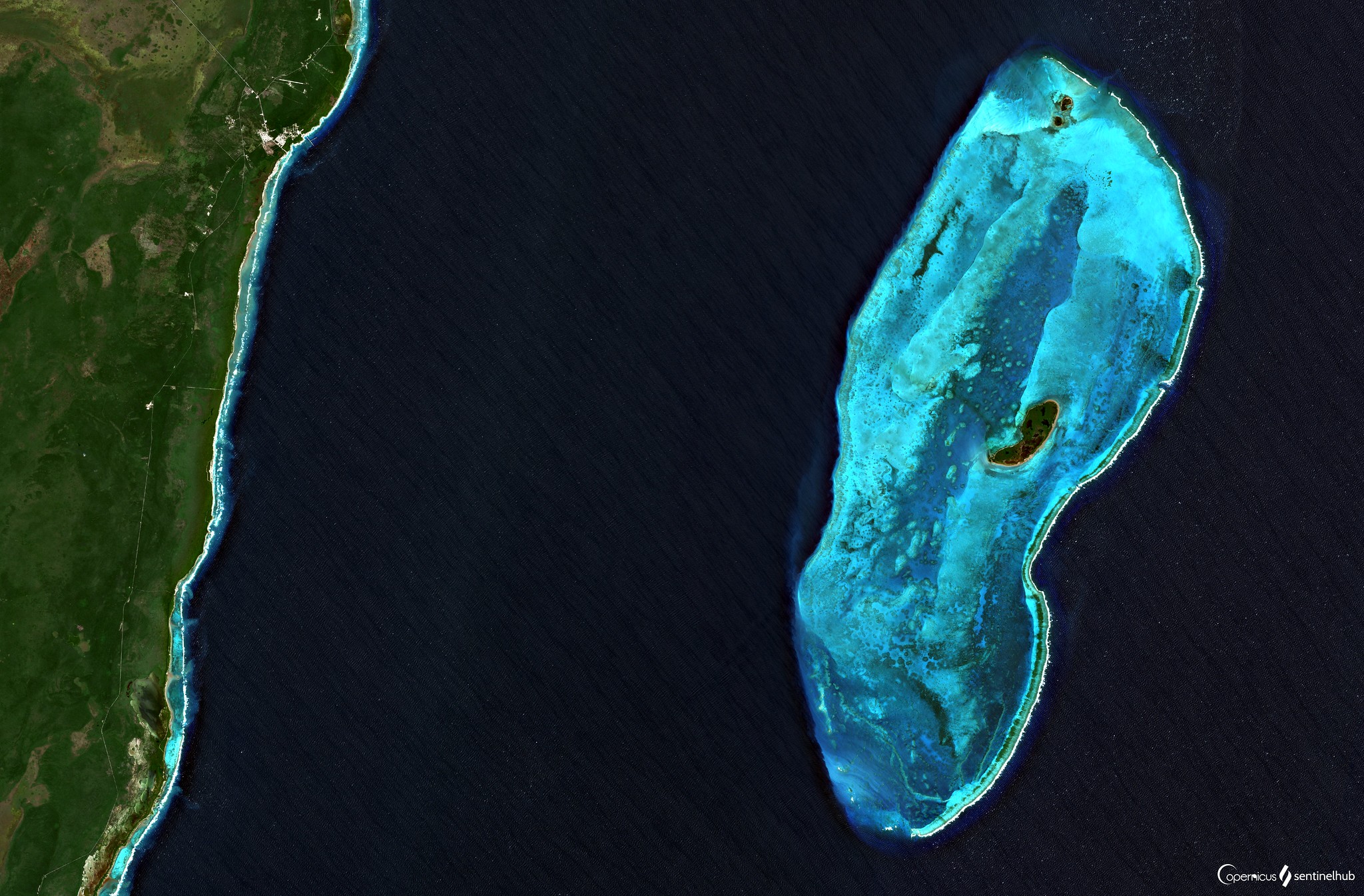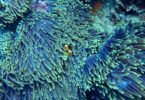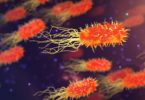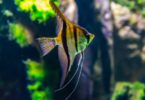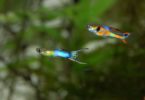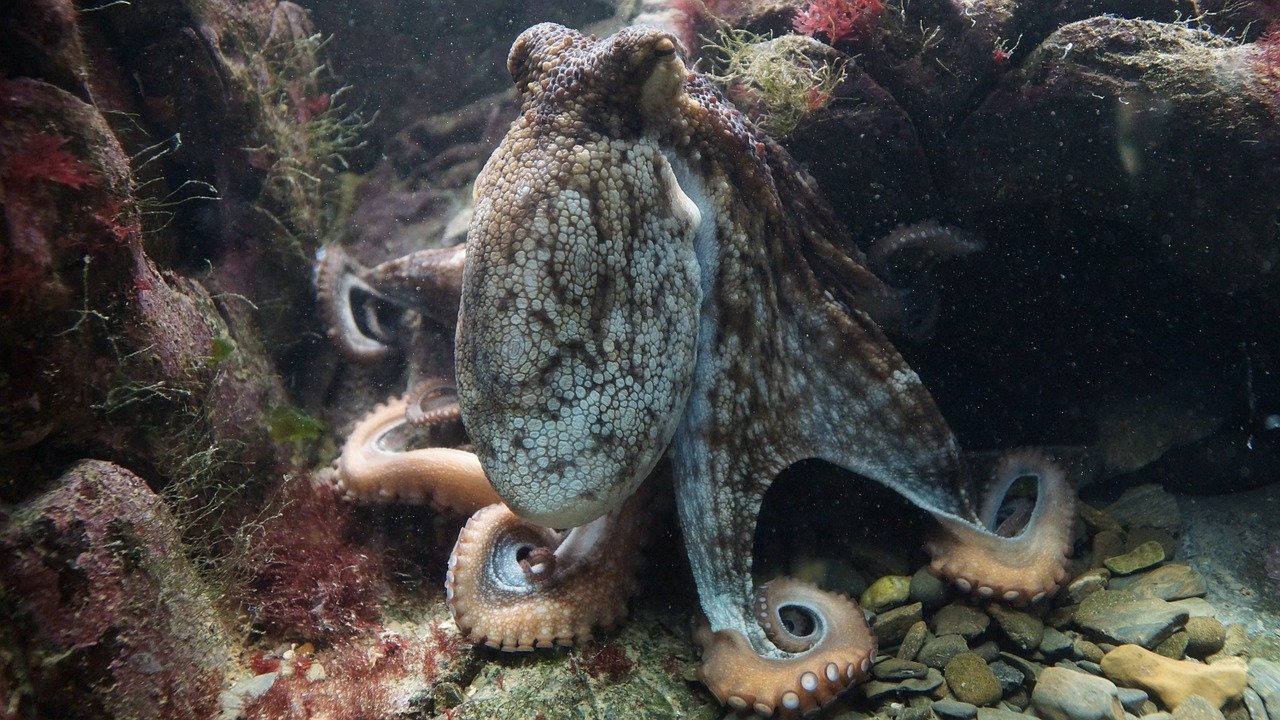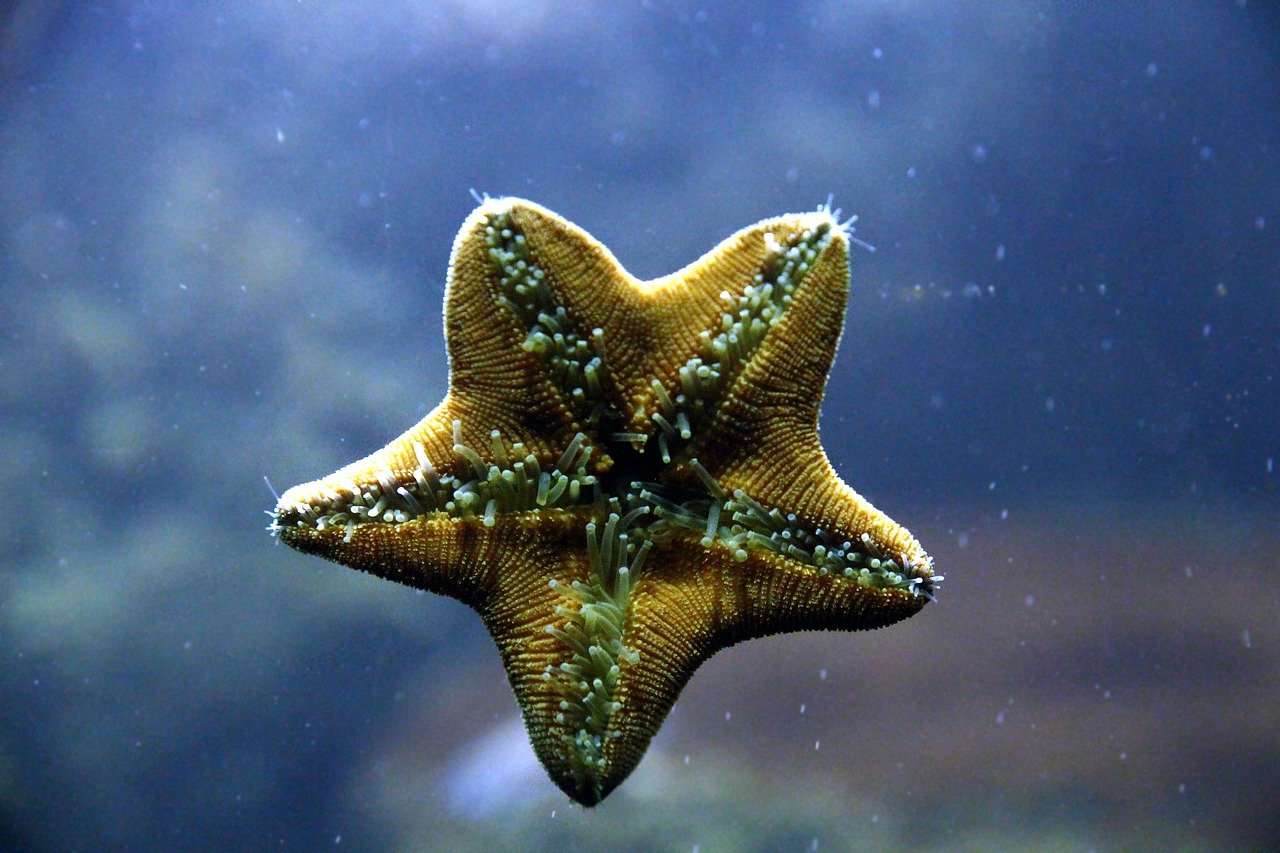Last Updated on February 10, 2023 by Matt
Banco Chinchorro is a coral atoll reef which is found off the coast of Mahahual, a small fishing village located on the Grand Costa Maya in the southeast of Mexico. It is the largest coral atoll in the northern hemisphere, and part of the Banco Chinchorro Biosphere Reserve, which emcompasses 144,000 hectares of coral reefs, mangroves, seagrass beds, and sandy beaches.
The reef is 25 miles long and 10 miles wide at the widest point, covering 310 sq miles. It consists of three main islands, Cayo Norte, Cayo Centro, and Cayo Lobos, which cover a land area of 2.6 sq miles.
There are no permanent settlements on Banco Chinchorro; only small huts for government employees and some stilt huts occupied by fishermen.
The nearest place to stay is the town of Mahahual, which offers plenty of dive schools and resorts. There is also the smaller and more traditional town of Xcalak which offers a dive school as well.
There is huge biodiversity of flora and fauna found in Banco Chinchorro; more than 2500 species of shark, grouper, lobster, angelfish, turtle, and dolphin have been seen in this area. This is only a small part of what makes Banco Chinchorro, or Chinchorro Bank as it is known in English, a truly stunning place to dive.
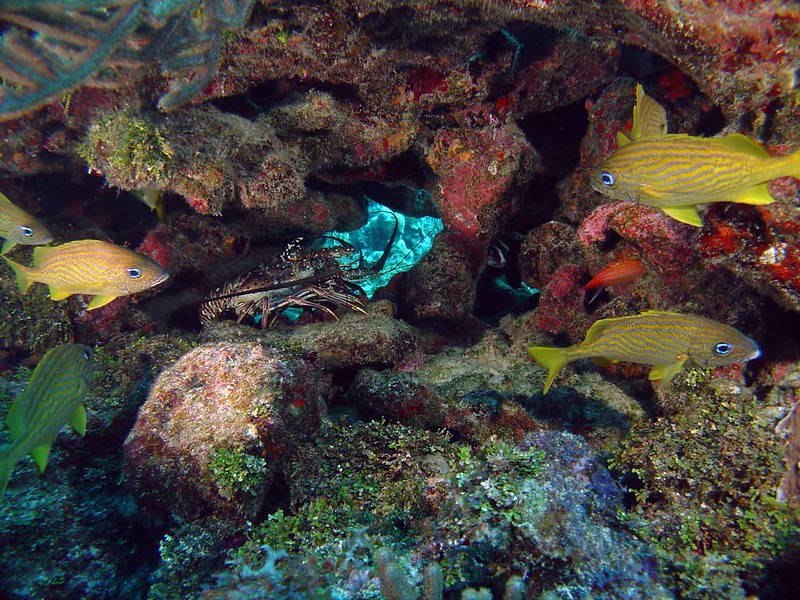
Photo Credit: SEMARNAT (Flickr)
Highlights of Diving in Banco Chinchorro
As a dive site, Banco Chinchorro is one of the must see regions of the world. The biodiversity is spectacular, and there are dive sites which are suitable to both expert and beginner divers.
Not only does Banco Chinchorro boast some of the most pristine coral reef ecosystems you’re likely to find, there are also more than 68 sunken shipwrecks, some of which are incredibly old Spanish galleons from over 500 years ago.
There are countless amazing animals that inhabit Banco Chinchorro, such as turtles, nurse sharks, whitetip reef sharks, groupers, and dolphins, but there is also a very unexpected guest that divers have that chance to swim with; crocodiles!
The crocodiles are found in the mangrove forests on the mainland coastline. If you stay in any of the resorts of dive schools in Mahahual or Xcalak you will be sure to be taken to see, dive, or snorkel with them! In this area manatees are also often seen, which can also be seen up close!
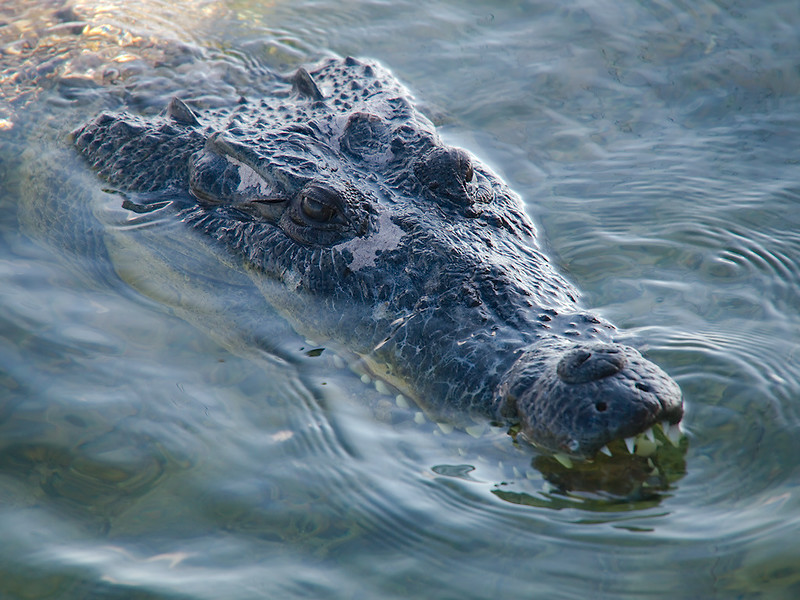
Photo Credit: Šarūnas Burdulis (Flickr)
Conditions
Banco Chinchorro can be visited throughout the year; one of the many good things about tropical regions!
The air temperatures can reach 84°F (29°C) to 90°F (32°C), and the sea temperature in the winter is a cool 77-81°F (25-27°C), and in summer ranges from 82-86°F (28-30°C). These temperatures are in the mid range of warm and cool. If you get cold easily then a 5mm or long wetsuit is appropriate, but for most a regular 3mm shortie is absolutely fine, and in summer for those who run warm just swimming trunks can be fine.
Remember that this is the Caribbean, so there is a rainy season that runs from June through to October, and there is also a chance of hurricanes.
Manta rays can be seen all year round, whale sharks are most prevalent from May to mid-September, oceanic whitetip and whitetip reef sharks can be seen November to June, and turtles are best seen from April to August.
Currents are often present and can be strong at times, although this can make for amazing drift dives to be possible. Visibility is normally very good, generally being from around 50-100 feet (15-30 meters). The best visibility can be found from May to September.
Banco Chinchorro has a dive site for everyone; the eastern side of the atoll is generally for more experienced and advanced divers, as it is exposed to stronger currents and higher winds. The western side of the atoll is much more protected, and therefore has much weaker currents and is suitable for beginner divers. In these areas are stunning coral reef ecosystems, which make for dives with beautiful and pristine reefs, with many thousands of fish to be seen. There are also shipwrecks to be explored, with these unique sites amazing both in the ships themselves and the animals that have colonized them.
Before Diving at Banco Chinchorro
Before being able to dive in Banco Chinchorro there are a few things to be aware of. The most serious are the biosecurity measures in place to preserve the Biosphere Reserve and ensure that nothing is brought in from the outside world that will damage or harm the reef in any way.
Everything taken to Banco Chinchorro needs to be disinfected; bags, backpacks, and shoes. As such cloth bags are not allowed, as they cannot be wet and disinfected. It is not allowed to wear shoes with rough or mountain soles as they are hard to disinfect. Only flip-flops and shoes are allowed. All equipment needs to be thoroughly disinfected as well.
Nothing that can possibly damage the ecosystem is allowed. This extends to sunscreen and sunblock; only biodegradable and reef-safe sunscreens are permitted. It is also necessary to notify crew of any food that is being taken as well, as seeds may impact the ecosystem.
While these measures may seem a little extreme if you aren’t used to them, they are actually very worthwhile. These measures are in place to protect the fragile coral reef ecosystems and ensure that the reef remains healthy for visitors for many years to come.
Featured Image Credit: Sentinel Hub (Flickr)

